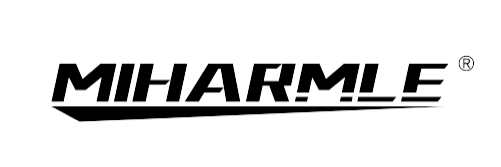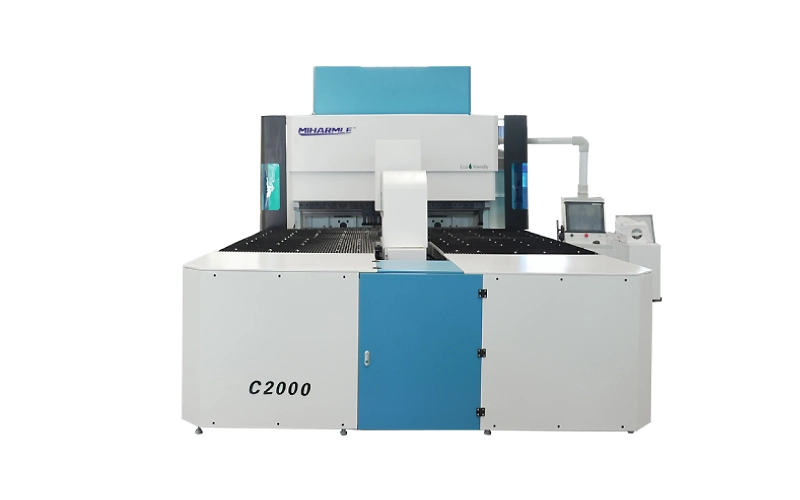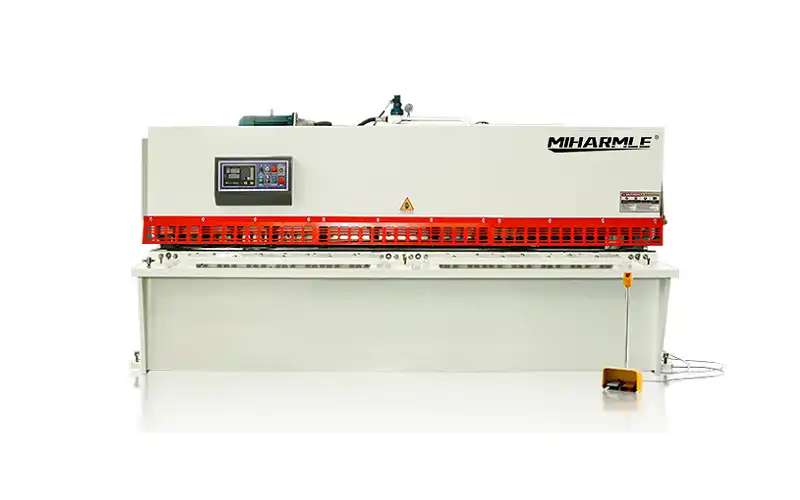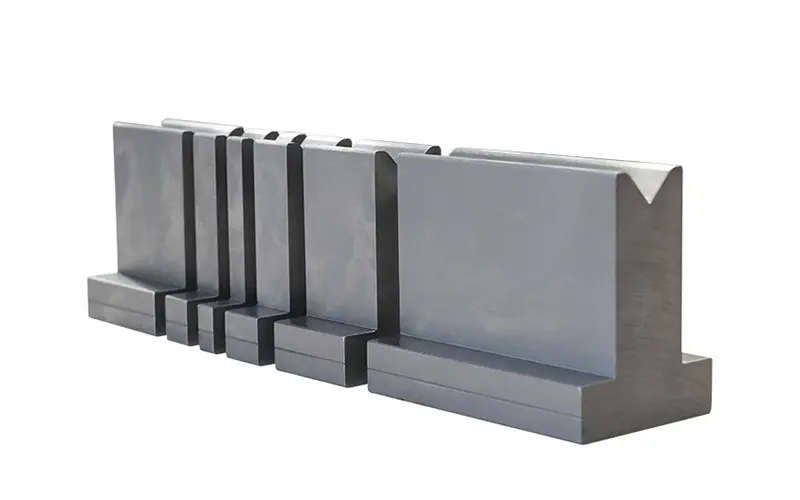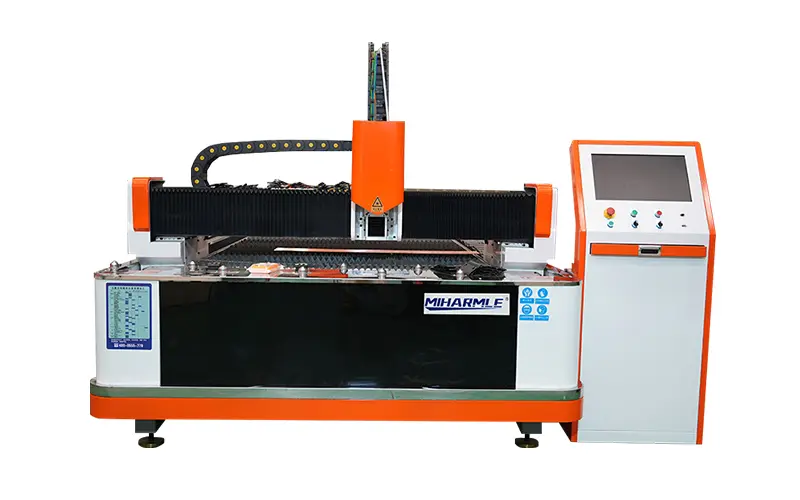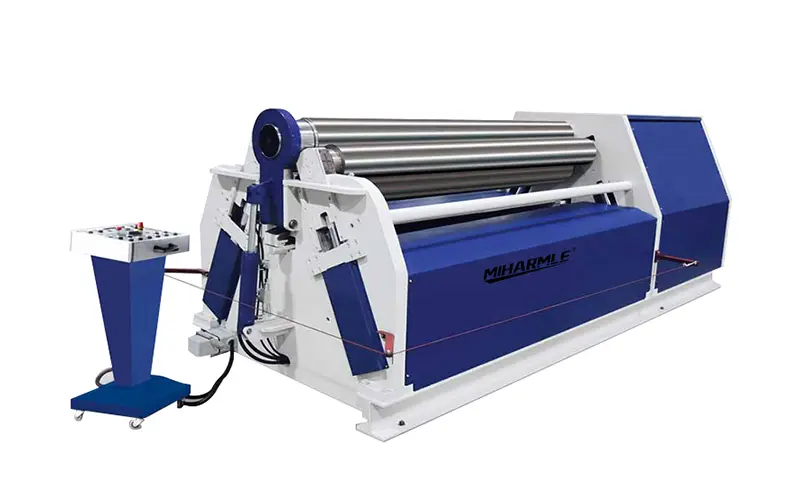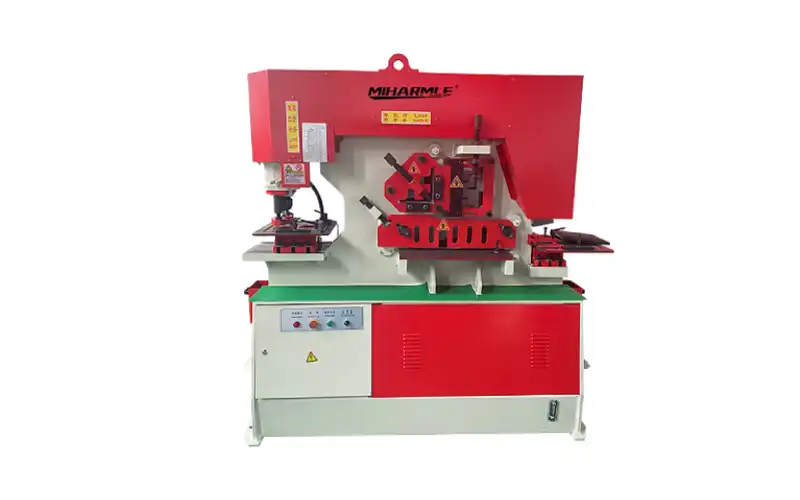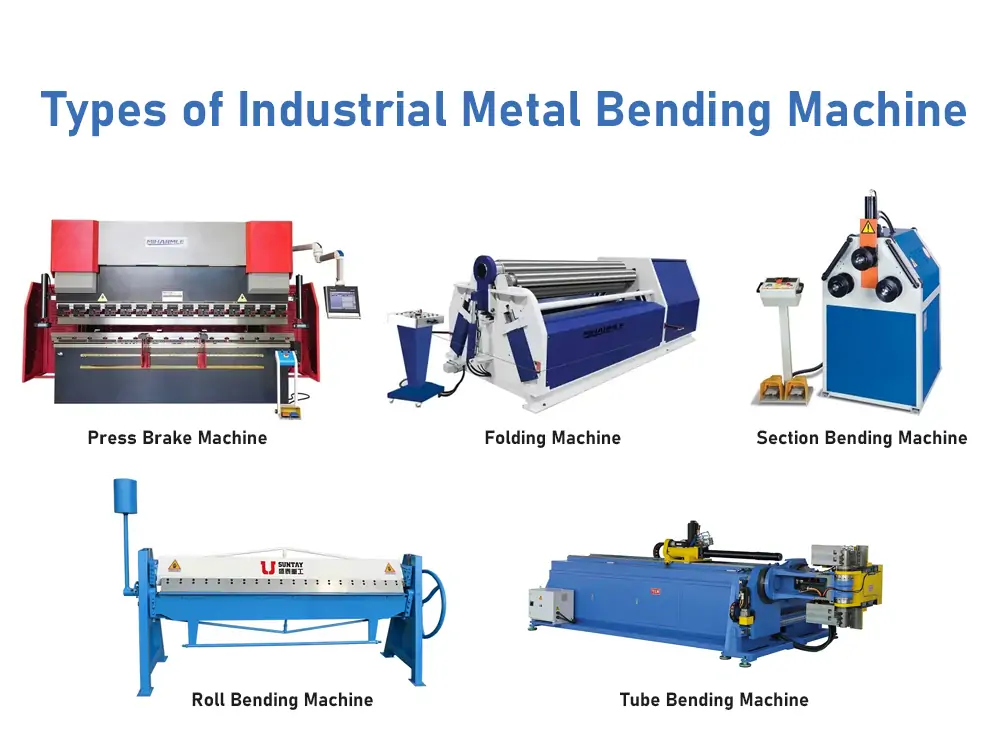
In the sheet metal fabrication industry, you will come across various industrial metal bending machines.
They shape, bend, curve, and transform sheet metal into unique components and products. It’s not that simple – it requires certain complex techniques and machines. With a significant influence on fields such as automotive, aerospace, and shipbuilding, they are classified according to certain features and characteristics.
Advancing technology like CNC is transforming the market. Understanding these types of industrial metal-bending machines will help you make informed decisions. Let’s review the list and discuss these complex machines in more detail.
Main Types of Industrial Metal Bending Machines
Here are the 5 main types of metal bending machines. These machines form the core of the metal bending industry. The following list is based on working principles, types, applications, and advantages and limitations. So, without any further ado, let’s start the list.
1. Press Brake Machine
Principio de funcionamiento
The metal bending press brake machine is one of the most well-known machines used in the metal fabrication industry. It works by clamping a sheet metal between a punch and a die. The punch is a bending tool attached to the ram, while the die serves as the holding tool, which is fixed to the bed. When the pressure is applied through a hydraulic or mechanical transmission system, the metal sheet deforms and is transformed into complex shapes. CNC press brake machines are also available. These are relatively expensive but very precise machines used for bending thick metals.
Types
Frenos de prensa mecánicos: A flywheel and clutch system for high-speed bending is suitable for mass production.
Frenos de prensa hidráulicos: Hydraulic cylinders are utilized, offering greater control and the ability to handle heavier workloads.
Electric Press Brakes: They possess electric motors, providing high precision and energy efficiency. Best for lighter and more accurate work.
Prensas plegadoras CNC: The machine receives a programmable set of instructions. Such machines offer highly precise bending and are best for repeatability in large production volumes.
Aplicaciones
- Straight-line bending: The straight-line bending process produces accurate straight bends in sheet metal. Most suitable in making components such as panels, brackets, and covers.
- Bending angle: The precise bending of metal sheets at a specific angle. It is critical in the manufacture of parts such as supports, frames, and mounting materials.
- Forming processing: creating complex shapes and contours in sheet metal by tool changing. It enables the manufacture of customized parts and prototypes through highly accurate bending processes.
Advantages and Limitations
Ventajas:
- High precision and repeatability, especially with CNC models
- Versatile, handling various metals and thicknesses
- Efficient for both small and large production runs
- Quick setup and easy operation with modern controls
Limitations:
- High initial cost
- Skilled technicians are required
- Not suitable for extremely thin metals
- Large machines consume significant power
2. Folding Machine
Principio de funcionamiento
Metal folding machines utilize a clamping tool and a folding beam to bend metal into desired shapes. They work when the workpiece is held between the clamping tool and a folding beam swings around the pivot point. This results in folding the workpiece into various shapes with consistent bends.
Types
Different types of folding machines include manual, automatic, and CNC versions. They are used for jobs ranging from small to complex. CNC folding machines comprise programmable systems that produce highly precise bends.
Aplicaciones
- Roofing and cladding panels
- Ductwork for HVAC systems
- Electrical enclosures and cabinets
- Automotive panels and frames
- Architectural elements (gutters, decorative trims).
Advantages and Limitations
Ventajas:
- High accuracy, especially for long or large sheets
- Surface scratching is reduced due to supported bending
- Suitable for complex bends and large workpieces
Limitations:
- Higher cost for automatic and CNC models
- Limited to certain thicknesses and types of bends
- It is not as fast as pressing the brakes for simple, repetitive bends.
3. Roll Bending Machine
Principio de funcionamiento
Roll plate bending machines, also known as roll bending machines, bend metal using a set of rollers (typically 3 or 4). They operate based on the deformation of the material. Metal profiles or sheets are gradually curved into shapes by the machine. In the roll bending machine, the material goes through the rollers, and the rollers exert force to form the required radius. The bend can be controlled by moving the roller position.
Types
3-Roll Bending Machines: These are the most common type, featuring an adjustable top roll and fixed bottom rolls. They are versatile and can be used in a variety of applications.
4-Roll bending Machines: A 4-roll bending machine is made up of two fixed upper and lower rollers and two side rollers. They can work with smaller radii and complicated shapes.
Vertical Roll Bending Machines: These machines are used for heavy, thick materials and are commonly found in shipbuilding and construction.
Aplicaciones
- Pipes, tubes, and cylinders manufacturing
- Arches, rings (architectural elements)
- Processing equipment of food and beverage components
- Hydropower equipment
- Curved panels
Advantages and Limitations
Ventajas:
- It is capable of creating large-radius bends and complex curves
- Appropriate for long and thick materials
- Efficiency in producing large volumes
- Most suitable for various sizes and shapes
Limitations:
- Manual machines are time-consuming and tiresome.
- Not ideal for small, precise bends
- Large machines require significant space and investment
4. Tube Bending Machine
Working principle
Tube bending machines work by exerting pressure on a pipe or a tube to make bends. The mechanism is as follows: a tube or metal pipe is placed in the mold, and then it is subjected to mechanical pressure. It makes bends without collapsing or deforming the cross-section. Depending on the needed bend and tube material, the process may be carried out with dies, rollers, or rotary draws.
Types
Rotary Draw Bending Machines: Highly accurate, use a rotating die; suitable for complex and tight-radius bends.
Roll Bending Machines: These are used for large-radius bends, similar to sheet roll benders.
Ram Bending machines: Simplest form, using a ram to press the tube between dies; suitable for less precise work.
CNC Tube Bending Machines: Computer-controlled for complex, multi-axis bends and high-volume production.
Hydraulic and Electric Tube Benders: Differ in power source and control; hydraulic for heavy-duty, electric for precision.
Aplicaciones
- Automotive part (oil pipelines, exhaust pipes, frames)
- Aerospace fuel and hydraulic lines
- Construction components (piping, frames, roofing)
- Furniture and handrails
- HVAC and refrigeration tubing
Advantages and Limitations
Ventajas:
- Produces highly precise and repeatable bends
- Maintains tube integrity (no wrinkling or flattening)
- Reduces the need for welding and joints
- Highly efficient
Limitations:
- High cost for advanced machines
- Some methods may deform the tube cross-section
- Setup can be complex for multi-radius or compound bends
5. Section Bending Machine
Principio de funcionamiento
Profile benders, also section bending machines, bend metal profiles into arches, rings, or spirals using 3 or 4 rollers. Rollers are pressed to attain the desired curve. The machines are appropriate in both asymmetrical and symmetrical bends. These machines can process various types of metal profiles, including angles, channels, and beams.
Types
Double Pinch Machines: Both bottom rolls move separately. It allows pre-bending at both ends and maximum flexibility.
Single Pinch Machines: In these machines, one bottom roll moves. It is suitable for simple bends.
Pyramidal Machines: These machines consist of a fixed bottom roll and a moving top roll. They help make symmetrical bends.
Aplicaciones
- Bending beams, channels, and angles for construction
- Making rings, arches, and frames for architecture
- Shipbuilding and heavy machinery
- Structural elements in bridges and towers
Advantages and Limitations
Ventajas:
- Can process a large variety of profiles and sizes
- High flexibility and efficiency
- Applicable to light and heavy-duty uses
Limitations:
- Double pinch machines are expensive
- Manual models are labor-intensive and less precise
- Pyramidal machines cannot pre-bend both ends, limiting versatility
Factors for selecting metal bending machines
Workpiece Material and thickness
Some of the materials used in the processing of plate metal bending machines include carbon steel, various grades of stainless steel, and aluminum. The type of material has a big influence on the selection of bending machines. Harder metals, such as carbon steel, require machines with increased tonnage and heavy tooling. On the other hand, less hard materials, such as low-grade stainless steel and aluminum, can easily be bent. They should be handled with care to avoid breaking them. Next, there is material thickness. It is also of great concern. Bending machines with higher bending capacities are beneficial for demanding thick metal sheets, whereas thin metal sheets require tighter bends.
Production requirements
The amount of production, size of metal parts, and design factors are some of the major issues that may influence the selection of the appropriate bending machines. Depending on the production volume, it is possible to choose between automated and semi-automated machines.
Automation and Accuracy Requirement
Quality bending requires high precision and accuracy, as well as tight tolerances and high quality. CNC-controlled equipment can perform more complex or intricate bends with greater accuracy and repeatability. The automation features, including programmable back gauges, tool changers, and angle measuring systems, limit the degree of human interaction, accelerate the process, and diminish mistakes.
Maintenance expenses and budget expenses
The upfront cost of the bending machines and the long-term maintenance cost are crucial. The budget may vary depending on the size, capacity, and automation. The initial cost is slightly higher for high-capacity machines, but the long-term maintenance costs may be lower.
This will reduce the repair expense when you purchase bending machines from a reputable manufacturer that provides good after-sales services and readily available alternative parts.
Conclusión
The sheet metal fabrication industry revolves around metal bending machines. They are applied in different industries and give precise and accurate bends. The above-mentioned are the major types of metal bending machines, which encompass significant industries. When selecting one to use in your business, think of the functionality and various attributes of the machines. Also, review your project requirements, production requirements, budgets, and other expenses to make the most informed choice.
